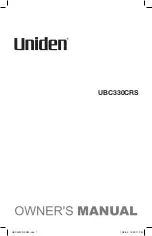
Capacitive Touchscreen
User Manual H12 / SCAMAX® 8x1 - Version 2019.12
Here an example using the counter 1 with a value of 123456:
Print text information
Print result
Print text information
Print result
%CNT1%
123456
%NMC6% %CNT1%
123456
%NMC2% %CNT1%
56
%NMC7% %CNT1%
0123456
%NMC3% %CNT1%
456
%NMC8% %CNT1%
00123456
%NMC4% %CNT1%
3456
%NMC9% %CNT1%
000123456
%NMC5% %CNT1%
23456
%NMC10% %CNT1%
0000123456
Date/time variables:
By specifying the variables
%TIME1%
-
%TIME9%
and
%DATE1%
-
%DATE6%
predefined date and time
strings are inserted into the text. The respective format is indicated on the right of the variable keys
in the keypad. In addition, the date can be specified in a separate format by variables. Here
%DOY%
stands for the current day of the year,
%CC%
for the century and
%YY%
for the decade,.
%MM%
for the
month number or
%MONTH%
for the month name and finally
%DD%
stands for the day of the month.
Check Digits
If you want to have checksums created, then use variables
%CD_%
and
%_CD%
to mark the beginning
and end of the character range to be included. Depending on the checksum algorithm used, this ran-
ge may contain alphanumeric characters or numerals only. You have a choice of three standardized
algorithms, all of them originally associated with bar code technology. You may select the desired
algorithm by placing the respective variable anywhere within your
Print Text
: Use
%CD25%
to create
checksums according to
Modulo 10
with
weighting factor 3
, the method used as standard with bar
codes of type 2/5 Interleaved.
%CD39%
will calculate checksums according to
Modulo 43
, which is the
method used with bar codes of type Code 39. Finally,
%CD128%
will calculate checksums according
to
Modulo 103
, a method used with bar codes of type Code 128. For more information about these
algorithms and their prerequisites, please refer to respective expert literature.
Note
:
%CD4_8%
refers
to a proprietary algorithm which will not be elaborated any further, here.
Print Attributes
...are used to change the appearance of the printed image. They can be specified at all points of the
text and apply to the part of the text after the attribute, possibly followed by another attribute of
the same kind. The following types of attributes can be selected for the definition of imprinter print:
Landscape on/off - Upside Down
defines the print orientation of the font
.
While
%LSOFF%
represents the default case,
%LSON%
rotates
each subsequent character by 90° to the left.
%USD%
(
Upside Down
) gilt dagegen für den gesamten
Text und dreht diesen um 180°
Spaced characters
can be generated in different spaces by the attributes
%CD##%
whereat CD stands for character di-
stance, thus the character spacing. Via the numerical data behind the distance is specified in pixels.
The possible specification goes from the standard
%CD00%
(no spacing)
to
%CD10%
(10 pixel spacing)
Wide font
%PT#%
designate attributes for specifying width font. Via the number specified behind PT, the ad-
ditional point width is specified. Possible specification goes from Standard
%PT0%
(normal type)
to
%PT5%
(extra wide)
Print Attributes HD
As mentioned above, towards the end of the list of variables and attributes, there are several attributes
ending with
(HD)
, which can only be used with optional Imprinters HD:
Low/Medium/High Density (HD)
These three attributes specify print resolution, with a choice of 300 dpi (
%PD1%
), 600 dpi (
%PD2%
)
or 1200 dpi (
%PD3%
). Place just one of these attributes at the beginning of the printer text. If none of
these attributes is used, printing will be performed with a default resolution of 300 dpi. Please note
that selecting higher resolutions will lead to increased ink consumption.
















































